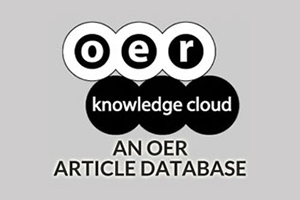Who Gets the Highest Return to Distance Higher Education?
DOI:
https://doi.org/10.19173/irrodl.v24i3.7143Keywords:
distance higher education, return to education, quantile regression, low-income groupAbstract
The economics of distance higher education have not attracted enough attention. Few studies have analyzed the different returns to distance higher education at various income levels. Based on empirical analysis of data from China Family Panel Studies (CFPS), this study explored the differences of return to distance higher education at different income levels by using Mincer earnings function and quantile regression. Compared with face-to-face education, the study found that distance higher education brought considerable benefits to learners. While the return to face-to-face higher education has continued to decline, return to distance higher education has risen. Comparing the returns to distance education at different income levels showed that low-income groups obtained greater benefits from distance higher education, which can help to improve the income of vulnerable groups and promote social equality. China’s distance education institutions should promote the idea that distance higher education can improve the income growth of low-income groups, and increase the financial support for low-income groups to access distance higher education.
References
Abdullah, A., Doucouliagos, H., & Manning, E. (2015). Does education reduce income inequality? A meta‐regression analysis. Journal of Economic Surveys, 29(2), 301–316. https://doi.org/10.1111/joes.12056
Allen, I. E., & Seaman, J. (2010). Class differences: Online education in the United States, 2010. Sloan Consortium (NJ1). https://files.eric.ed.gov/fulltext/ED529952.pdf
Bates, T. (2013, October 23). Is there a future for distance education? Online Learning and. Distance Education Resources. https://www.tonybates.ca/2013/10/23/is-there-a-future-for-distance-education/
Carnoy, M. (1995). Rates of return to education. In M. Carnoy (Ed.), International Encyclopedia of the Economics of Education (pp. 364–369). Elsevier Science.
Carnoy, M., Rabling, B. J., Castaño‐Muñoz, J., Montoliu, J. M. D., &. Sancho‐Vinuesa, T. (2012). Does on‐line distance higher education pay off for adult learners? The case of the Open University of Catalonia. Higher Education Quarterly, 66(3), 248–271. https://doi.org/10.1111/j.1468-2273.2012.00520.x
Castaño-Muñoz, J., Carnoy, M., & Duart, J. M. (2016). Estimating the economic payoff to virtual university education: A case study of the Open University of Catalonia. Higher Education, 1, 1–24. http://link.springer.com/article/10.1007/s10734-015-9935-1
Chen, L., & Wang, N. (2010). Attitudes to distance education in China. In J. Baggaley & T. Belawati (Eds.), Distance Education Technologies in Asia (pp. 111–126). Sage India.
Coady, D., & Dizioli, A. (2018). Income inequality and education revisited: Persistence, endogeneity and heterogeneity. Applied Economics, 50(25), 2747–2761. https://doi.org/10.1080/00036846.2017.1406659
Esfijani, A. (2018). Measuring quality in online education: A meta-synthesis. American Journal of Distance Education, 32(1), 57–73. https://doi.org/10.1080/08923647.2018.1417658
Gaskell, A., & Mills, R. (2014). The quality and reputation of open, distance and e-learning: What are the challenges? Open Learning: The Journal of Open, Distance and e-Learning, 29(3), 190–205. https://doi.org/10.1080/02680513.2014.993603
Gillies, D. (2017). Human capital theory in education. Encyclopedia of Educational Philosophy and Theory (pp. 1–5). https://doi.org/10.1007/978-981-287-532-7_254-1
Ginting, T. A. B., Sudibia, I. K., Dewi, N. P. M., & Marhaeni, A. A. I. N. (2020). The effect of education and dependency ratio on economic growth and poverty in Papua. American Journal of Humanities and Social Sciences Research, 4(6), 186–195. https://ajhssr.com/wp-content/uploads/2020/06/X2046186195.pdf
Heckman, J. J., Lochner, L. J., & Todd, P. E. (2006). Earnings functions, rates of return and treatment effects: The Mincer equation and beyond. Handbook of the Economics of Education, 1, (pp. 307–458). https://doi.org/10.1016/S1574-0692(06)01007-5
Heckman, J. J., Lochner, L. J., & Todd, P. E. (2003). Fifty years of Mincer earnings regressions. (NBER Working Paper, No. 9732). https://www.nber.org/system/files/working_papers/w9732/w9732.pdf
Hofmarcher, T. (2021). The effect of education on poverty: A European perspective. Economics of Education Review, 83, 102124. https://doi.org/10.1016/j.econedurev.2021.102124
Hoxby, C. M. (2017). Online postsecondary education and labor productivity. In C. R. Hulten & V. A. Ramey (Eds.), Education, skills, and technical change: Implications for future US GDP growth (pp. 401–460). University of Chicago Press.
Johnson, E. N., & Chow, G. C. (1997). Rates of return to schooling in China. Pacific Economic Review, 2(2), 101–113. https://doi.org/10.1111/1468-0106.t01-1-00026
Johnes, G., Johnes, J., & López-Torres, L. (2017). Human capital and returns to education. In G. Johnes, J. Johnes, T. Agasisti, & L. López-Torres (Eds.), Handbook of contemporary education economics (pp. 1–21). Edward Elgar Publishing.
Koenker, R., & Bassett, G. (1978). Regression quantiles. Econometrica, 46(1), 33–50. https://doi.org/10.2307/1913643
Li, D. (2017). The comparison of regional disparity of returns to education in China: An empirical study based on CHIP data [Unpublished master’s thesis]. Dongbei University of Finance Economics, Dalian.
Li, F. (2018). The expansion of higher education and the return of distance education in China. International Review of Research in Open and Distributed Learning, 19(4). https://doi.org/10.19173/irrodl.v19i4.2881
Li, F., Li, Y., & Zhang, S. (2015). The effect of distance education on personal income: From the perspective of urban and rural areas and gender. e-Education Research, 36(07), 49-54. https://doi.org/10.13811/j.cnki.eer.2015.07.007
Li, F., & Meng, Y. (2021). Is the scale of postgraduate expansion inertia-dependent or demand-driven in China. Research in Educational Development, 41(Z1),9-16. https://kns.cnki.net/kcms/detail/detail.aspx?doi=10.14121/j.cnki.1008-3855.2021.z1.004
Li, F., & Wang, L. (2020). The difference of returns to distance higher education in terms of sector and region. Chinese Journal of Distance Education, 41(04), 12-18, 76. https://doi.org/10.13811/j.cnki.eer.2015.07.007
Li, F., & Wang, L. (2021). The empirical analysis of return to distance higher education in different disciplines. International Review of Research in Open and Distance Learning, 22(1), 149-165. https://doi.org/10.19173/irrodl.v22i1.5029
Li. F., & Yu, C. (2022). Research on adjustment of master's student national grant sums in China. Journal of Northwestern Polytechnical University (Social Sciences), 1, 57-68. https://doi.org/10.3969/j.issn.1009-2447.2022.01.007
Li, F., Yue, C., & Hou, L. (2009). Over-education and the signaling function of education. China Economic Quarterly, 8(02),569-582. https://doi.org/10.13821/j.cnki.ceq.2009.02.008
Liu, Y., & Li, F. (2020). An empirical study on poverty alleviation and educational contribution in central and western China. Lifelong Education Research, 31(3), 62–69. https://doi.org/10.13425/j.cnki.jjou.2020.03.008
Liu, Z., & Liu, J. (2020). A meta-analysis on the returns to education in China. Journal of Beijing Normal University (Social Sciences), 5, 13–25. https://doi.org/10.3969/j.issn.1002-0209.20
Ministry of Education of the People’s Republic of China. (2019). China’s higher education is about to enter the stage of popularization. http://www.moe.gov.cn/fbh/live/2019/50340/mtbd/201902/t20190227_371425.html
National Bureau of Economic Research. (2021, December). Joshua Angrist, David Card, and Guido Imbens awarded 2021 Nobel Prize. https://www.nber.org/news/joshua-angrist-david-card-and-guido-imbens-awarded-2021-nobel-prize
Psacharopoulos, G. (1985). Return to education: A further international update and implications. Journal of Human Resources, 20(4), 583–604. https://doi.org/10.2307/145686
Psacharopoulos, G. (1994). Return to investment in education: A global update. World Development, 22(9), 1325–1343. https://doi.org/10.1016/0305-750X(94)90007-8
Psacharopoulos, G., & Patrinos, H. A. (2004). Return to investment in education: A further update. Education Economics, 12(2), 111–134. https://doi.org/10.1080/0964529042000239140
Qazi, W., Raza, S. A., Jawaid, S. T., & Karim, M. Z. A. (2018). Does expanding. higher education reduce income inequality in emerging economy? Evidence from Pakistan. Studies in Higher Education, 43(2), 338–358. https://doi.org/10.1080/03075079.2016.1172305
Romele, L. (2012). Estimation of rates of return to education in Latvia. Societas et Res Publica, 1(4), 40. https://doi.org/10.15181/rfds.v11i3.623
Shen, H., & Zhang, Q. (2015). Diploma effects under the interaction between labor market segmentation and family capital. Educational Research, 36(8), 22–32. http://ww2.usc.cuhk.edu.hk/PaperCollection/webmanager/wkfiles/2012/201512_24_paper.pdf
Spence, M. (1973). Job market signaling. Quarterly Journal of Economics, 87, 355–374. https://doi.org/10.2307/1882010
Wang, X., & Wang, J. (2021). Substantial equivalence: Realization and transcendence of minimum goal of online teaching during the epidemic period. e-Education Research, 42(3), 42–47. https://doi.org/10.13811/j.cnki.eer.2021.03.006
Woodley, A., & Simpson, C. (2001). Learning and earning: Measuring ‘rates of return’ among mature graduates from part‐time distance courses. Higher Education Quarterly, 55(1), 28–41. https://doi.org/10.1111/1468-2273.00172
Yang, Y., & Cornelius, L. F. (2004, Jan). Students’ perceptions towards the quality of online education: A qualitative approach [Paper presentation]. 2004 Annual Proceedings-Chicago, Chicago, US. https://files.eric.ed.gov/fulltext/ED485012.pdf
Zhang, C., & Jin, Y. (2020). The impact of returns to education on income gap in China: An analysis based on the quantile regression model. Journal of Nanjing Audit University, 17(2), 91–101. https://doi.org/10.3969/j.issn.1672-8750.2020.02.010
Zheng, Q., Chen, G., & Zhang, X. (2009). Individual return ratio of education investment for distance education. Journal of Beijing Normal University (Social Sciences), 2, 99–105. https://doi.org/10.3969/j.issn.1002-0209.2009.0 2.015
Published
How to Cite
Issue
Section
License

This work is licensed under a Creative Commons Attribution 4.0 International License.
This work is licensed under a Creative Commons Attribution 4.0 International License. The copyright for all content published in IRRODL remains with the authors.
This copyright agreement and usage license ensure that the article is distributed as widely as possible and can be included in any scientific or scholarly archive.
You are free to
- Share — copy and redistribute the material in any medium or format
- Adapt — remix, transform, and build upon the material for any purpose, even commercially.
The licensor cannot revoke these freedoms as long as you follow the license terms below:
- Attribution — You must give appropriate credit, provide a link to the license, and indicate if changes were made. You may do so in any reasonable manner, but not in any way that suggests the licensor endorses you or your use.
- No additional restrictions — You may not apply legal terms or technological measures that legally restrict others from doing anything the license permits.







